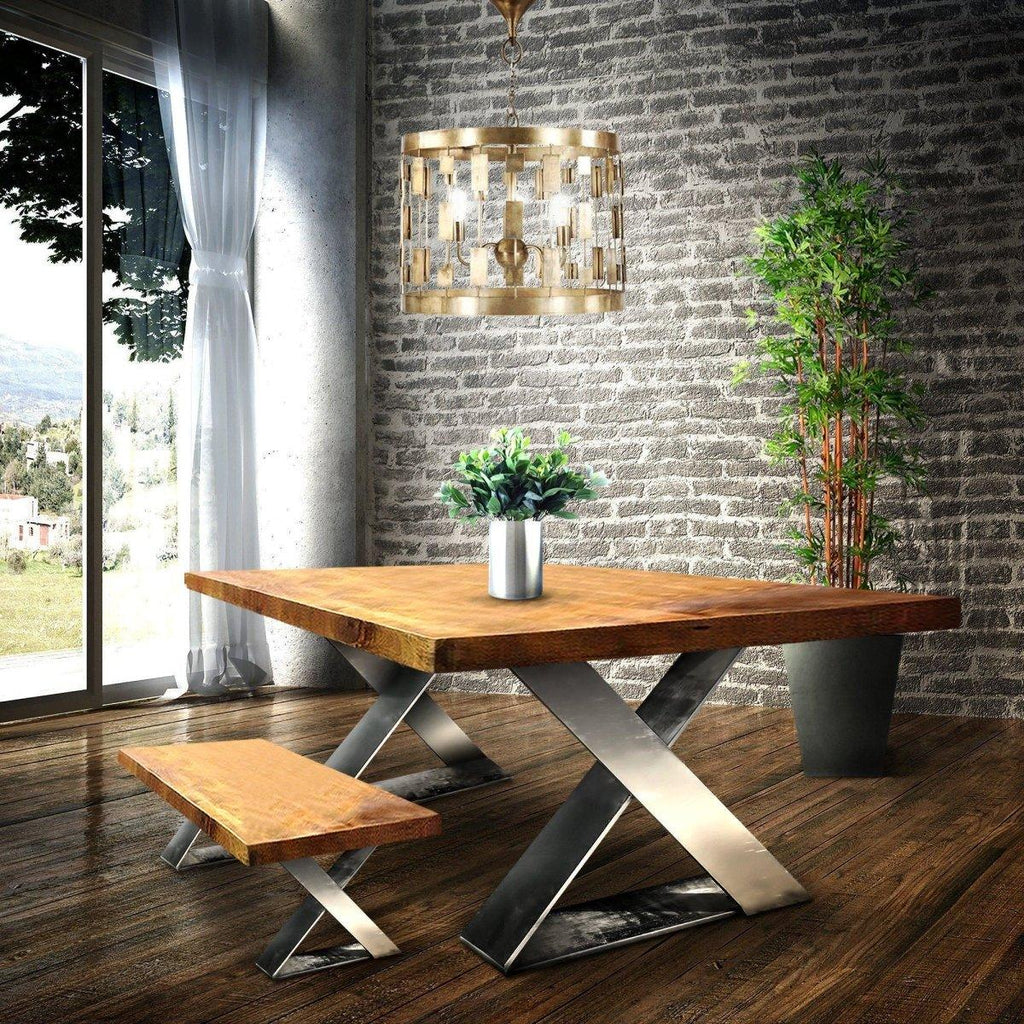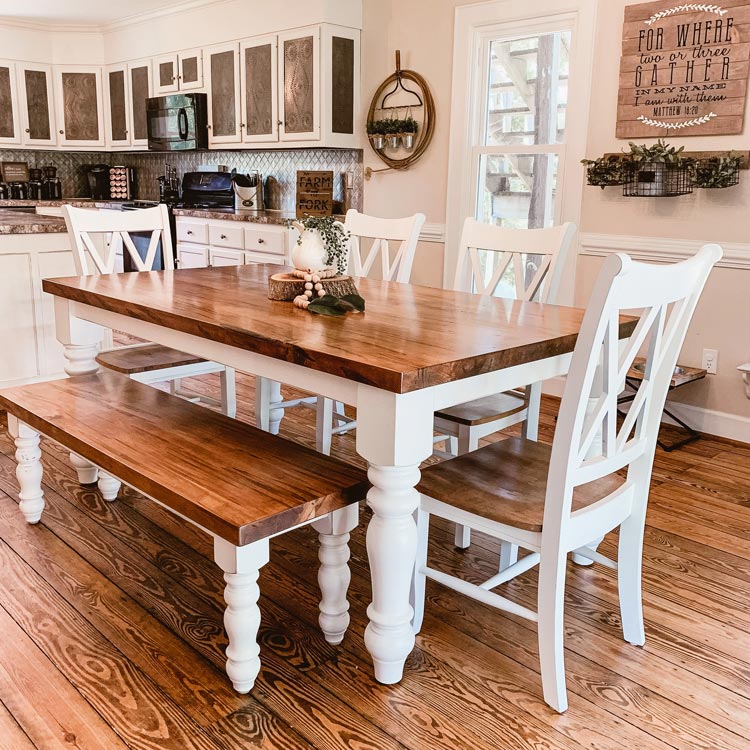Expert Tips for Putting Up Dining Space Table Legs for Maximum Security
When it comes to mounting dining area table legs, achieving optimum security is paramount for both capability and aesthetic appeals. What certain strategies can improve security also better?
Select the Right Legs
When selecting the appropriate legs for your dining-room table, it is essential to consider both capability and visual appeals. The legs you select will significantly affect the general design and security of the table. Assess the table's intended use; if you expect frequent gatherings, tougher legs, such as those made from strong timber or steel, might be a lot more appropriate, as they use boosted longevity and assistance.
Following, take into consideration the elevation and design of the legs in connection with the tabletop. Conventional table usually range from 28 to 30 inches in height, so guarantee the legs align with this standard for comfort. The design of the legs need to enhance the style of the tabletop-- whether it be modern-day, rustic, or typical. For example, tapered legs can include a contemporary touch, while transformed legs could convey a much more classic visual.

Select Appropriate Equipment
Just how can the right hardware improve the stability and long life of your dining space table? The selection of suitable equipment is critical to guaranteeing that the legs of your table are securely connected and able to withstand regular use. High-quality screws, screws, and brackets offer the essential toughness to support the weight of the table, as well as any additional tons put upon it throughout dishes or celebrations.
When choosing screws, go with those made from long lasting materials such as stainless steel or brass, which withstand rust and maintain honesty over time. The length of the screws is equally vital; they need to permeate deeply right into the table's framework without endangering integrity. For bolted links, consider utilizing lock washing machines to stop loosening due to vibration or motion.
In addition, making use of edge brackets can include additional support, especially for bigger tables or those with much heavier tops. These brackets disperse weight uniformly and help preserve the table's form. Making certain that the equipment you select is ideal for the certain materials of your table will certainly even more enhance its general stability and long life, allowing you to appreciate your dining experience for several years to find.
Ensure Proper Positioning
Correct placement of eating area table legs is important for both aesthetic allure and functional stability. To achieve optimal positioning, start by measuring the range from the table's edges to the leg add-on points.
Use a level throughout installation to verify that each leg is perpendicular to the tabletop. It is recommended to mark the preferred leg settings on the underside of the table with a pencil or concealing tape prior to protecting them.
In addition, double-check the positioning after the preliminary screws are tightened up, as changes might be essential before fully protecting the equipment. By prioritizing appropriate placement, you not only improve the table's general style however additionally ensure that it remains practical and secure for several years ahead.

Take Into Consideration Weight Circulation
After guaranteeing proper alignment of the dining-room table legs, it is necessary to think about weight distribution to enhance security and functionality. dining room table legs. Correct weight distribution is important More Help in preventing guaranteeing and wobbling that the table can sustain its intended lots without risk of tipping or collapsing
When positioning the legs, guarantee they are positioned at equal distances from the center of the table to evenly disperse the weight across the framework. Think about the weight of the tabletop and any type of items that will regularly hinge on it, such as tabletop appliances or attractive pieces. Tables with larger surfaces must ideally have legs located closer to the corners, as this makes best use of the base of support and minimizes the threat of instability.
Additionally, if the table is meant for usage in a high-traffic area, take into consideration using much heavier products for the legs or including stabilizing components, such as cross-bracing or a lower shelf - dining room table legs. These modifications can assist preserve equilibrium and prevent shifting throughout use. Inevitably, a well-considered weight circulation strategy will substantially boost the table's overall performance, ensuring it stays a eye-catching and functional centerpiece for your eating space
Test Stability Before Use
Examining the stability of the dining-room table before use is a crucial step that ought to not be ignored. Making sure that the table is secure and safe and secure can prevent accidents and extend the life expectancy of the furnishings. Begin by using gentle pressure to different factors on the table surface area. Lower on the facility and after that along the sides, shifting or observing any wobbling. Identify the legs or joints that may require adjustment. if the table shows instability.
Following, check that all bolts and screws are tightened up properly. Loosened connections can result in instability and prospective damage over time. If essential, make use of wood glue on joints to enhance security, making sure to enable ample drying time.

Conclusion
To conclude, the setup of eating room table legs needs cautious Homepage consideration of products, equipment, alignment, and weight circulation to achieve optimum security. By choosing top quality bolts and sturdy legs, making sure specific placement, and dispersing weight evenly, the structural stability of the table can be dramatically enhanced. Performing a stability test prior to routine use better guarantees that the table will stand up to daily stress, therefore offering a trustworthy and secure eating experience.
When it comes to mounting dining area table legs, achieving maximum stability is paramount for both functionality and aesthetic appeals. The legs you pick will dramatically influence the general style and stability of the table (dining room table legs). Basic dining tables generally range from 28 to 30 inches in elevation, so make certain the legs straighten with this requirement for comfort.Proper placement of eating space table legs is vital for both aesthetic allure and useful stability.In conclusion, the installation of eating space table legs requires mindful factor to consider of materials, alignment, weight, and equipment circulation click here for more to attain maximum security
Comments on “Transform Your Dining Space with Stylish Dining Room Table Legs”